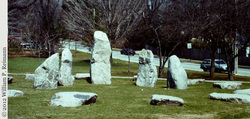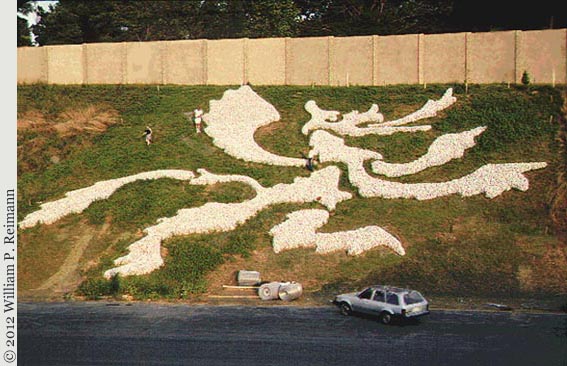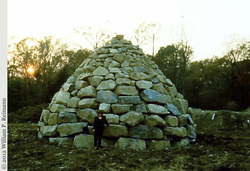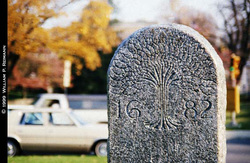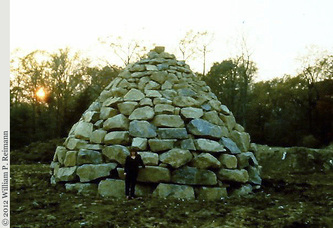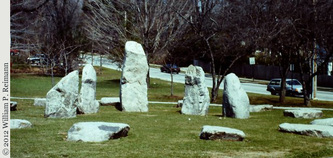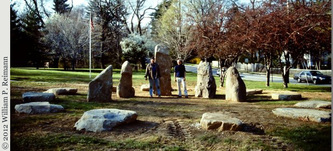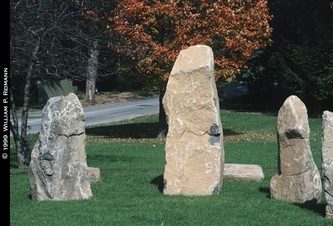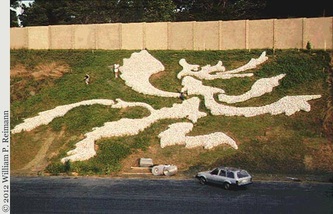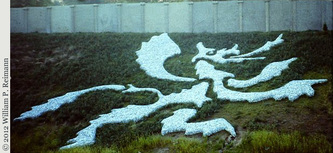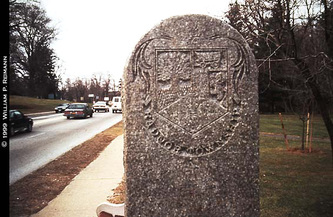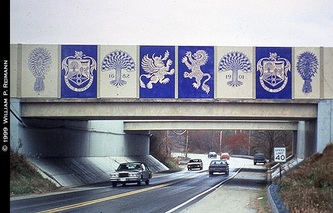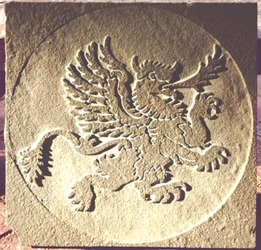Radnor Township
In the late 1980s, the Radnor Township was designated for highway development. The town was strongly in need of a coherent strategy in the art projects that were to be developed as "placemaking" compensation for the incursions of a four lane highway on their land.
Will drew on the historic Welsh settlement of the area for his ideas, adapting a series of images that had been used on the town seal since the 17th century. Using a variety of materials including selected stones dug free during the course of the road work, he created a striking and diverse series of permanent installations: a monumental cairn, a stone circle, a gigantic hillside griffin. |
|
June 2021: these pages are being reorganized and updated (especially the image quality)
